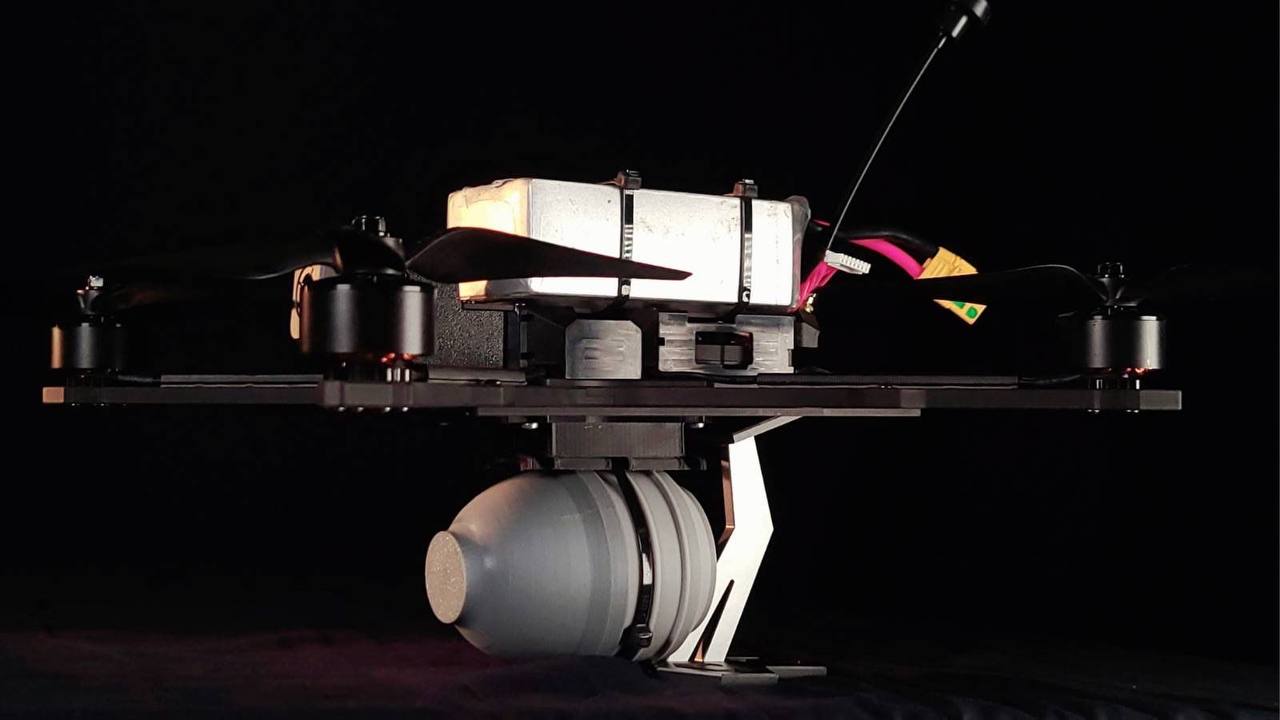325 km/h: While Ukraine Breaks New Speed Record For Armed FPV Drone, Let’s Take a Look at the World’s Fastest
Ukrainian first-person-view (FPV) drone workshop Wild Hornets has presented another result of their efforts: a drone capable of accelerating up to 325 km/h, or 202 mph, as evidenced by the published footage from the tests. The design and other features of this classified product are unknown, besides the fact it’s powered by multiple rotors and propellers.
Apparently, it’s a so-called anti-aircraft FPV drone the likes of which have been increasingly used by Ukrainian Defense Forces to take down russian reconnaissance UAVs and even launch strikes on the attack helicopters of the russian army.
High-speed FPV drone from Wild Hornets accelerated to 325 km/h. We broke our previous speed record.We continue to develop this project. A little more and the first batch of such drones will go to perform special and very important tasks.You can support our developments by… pic.twitter.com/90aJcts7hm— Wild Hornets (@wilendhornets) September 14, 2024
This achievement comes as a logical development of the previous speed record showcased by Wild Hornets a month ago, when their FPV drone broke 260 km/h. There is no indication if the same model was further developed or a new type was created.
Importantly, the speed parameter has a direct impact on an anti-aircraft drone’s effectiveness. The operator has a limited amount of time to intercept the target until the battery runs out, and the ability to quickly catch up is a major advantage. Especially considering that many russian scout drones are no slow vehicles either: the most common, Orlan-10, has a cruising speed of 110 km/h, and a max speed of 150 km/h.
However, each system has performance limits, and copter drones are no exception. To get a grasp of how far rotorcraft drone developers all over the world managed to go in their attempts to create a high-speed FPV, let’s take a look at the most prominent examples.
As of September 2024, the record holder is the Peregreen 2 with a result of 480.23 km/h (~300 mph), set in April 2024 by Luke and Mike Bell from the Republic of South Africa.
As you can see, at such high speeds, the design needs to take into account aerodynamics, therefore the rocket-like frame. This wasn’t a known-how in itself, as the previous record holder from January 2023, the XLR V3 made by Ryan Lademann, implemented a similar solution. That drone reached the speed of 414 km/h, although went down the records at 360 km/h as per Guinness World Records guidelines. Besides, the first drones implementing the rocket frame began appearing from enthusiasts as early as 7 or 8 years ago, beating around 270 km/h.
That said, copter drones created for world records and for combat missions differ substantially. For one thing, the combat drones need to carry a warhead. They also must be able to not just achieve a certain speed for a couple of seconds but maintain it for as long as possible until the target is intercepted, meaning a heavier battery installed for endurance.

Nonetheless, the tests of the new FPV drone by Wild Hornets show very promising results. The speed of 325 km/h is already on par with many typical aircraft used by the russian invasion forces, including Orlan-10 reconnaissance drone, Lancet and Shahed loitering munitions, barely above Mi-8 and Mi-28 helicopters. Though it still falls below the idealistic expectations that an effective FPV interceptors need to have at least 450 km/h cruising speed and 800 km/h maximum.

